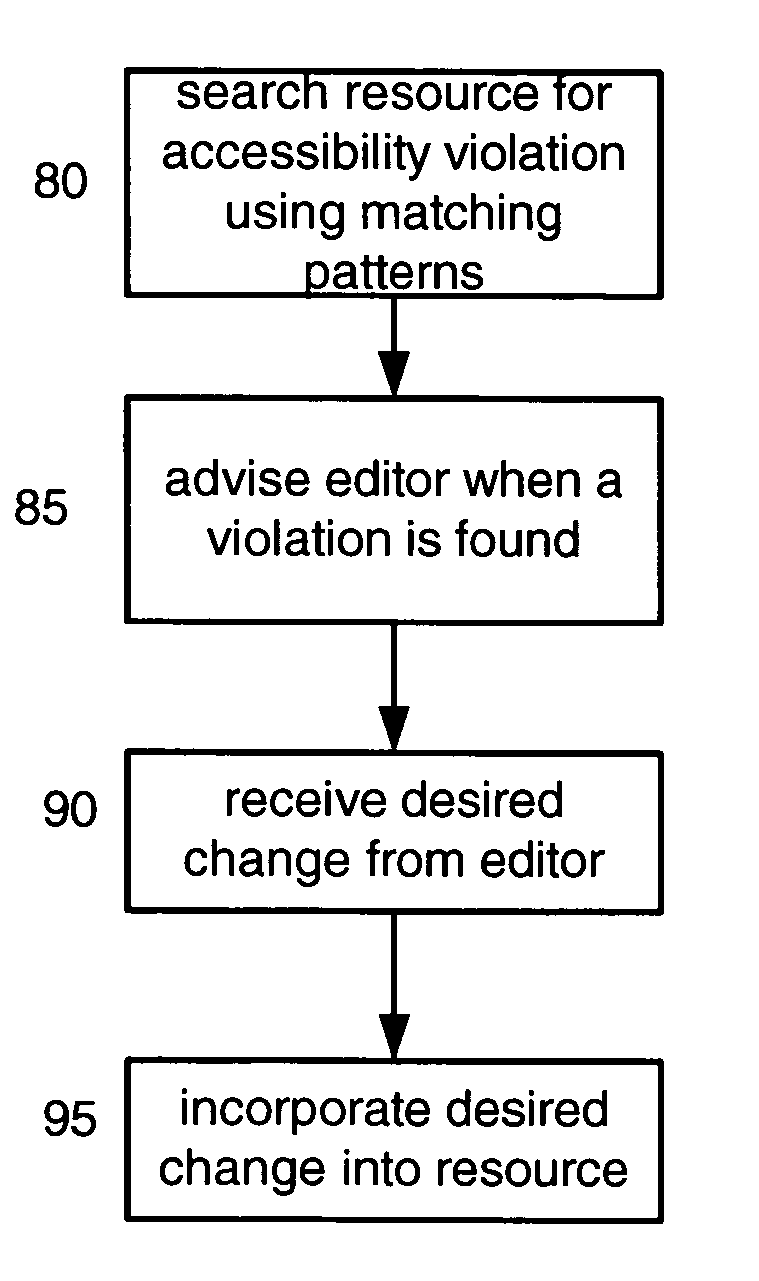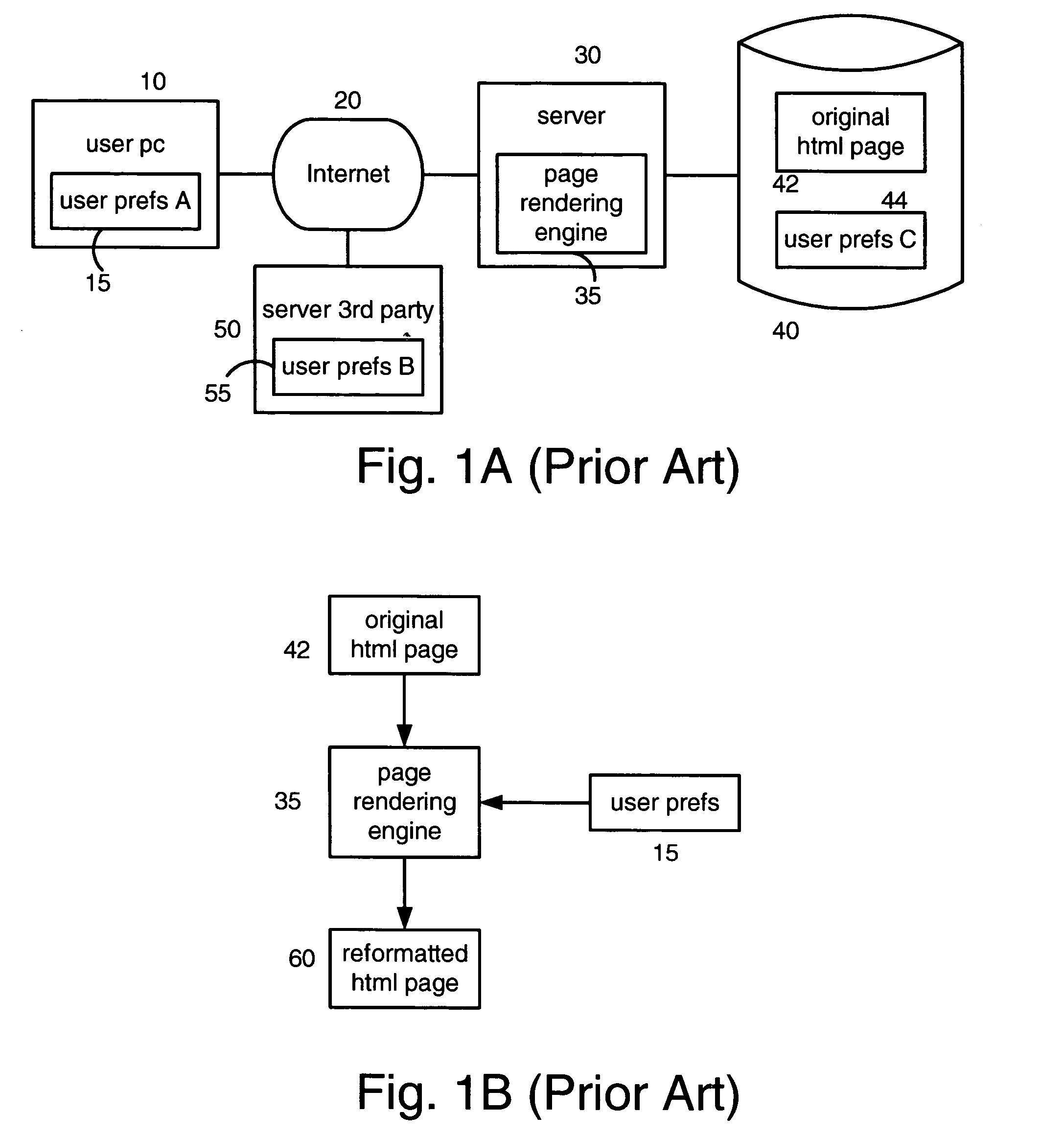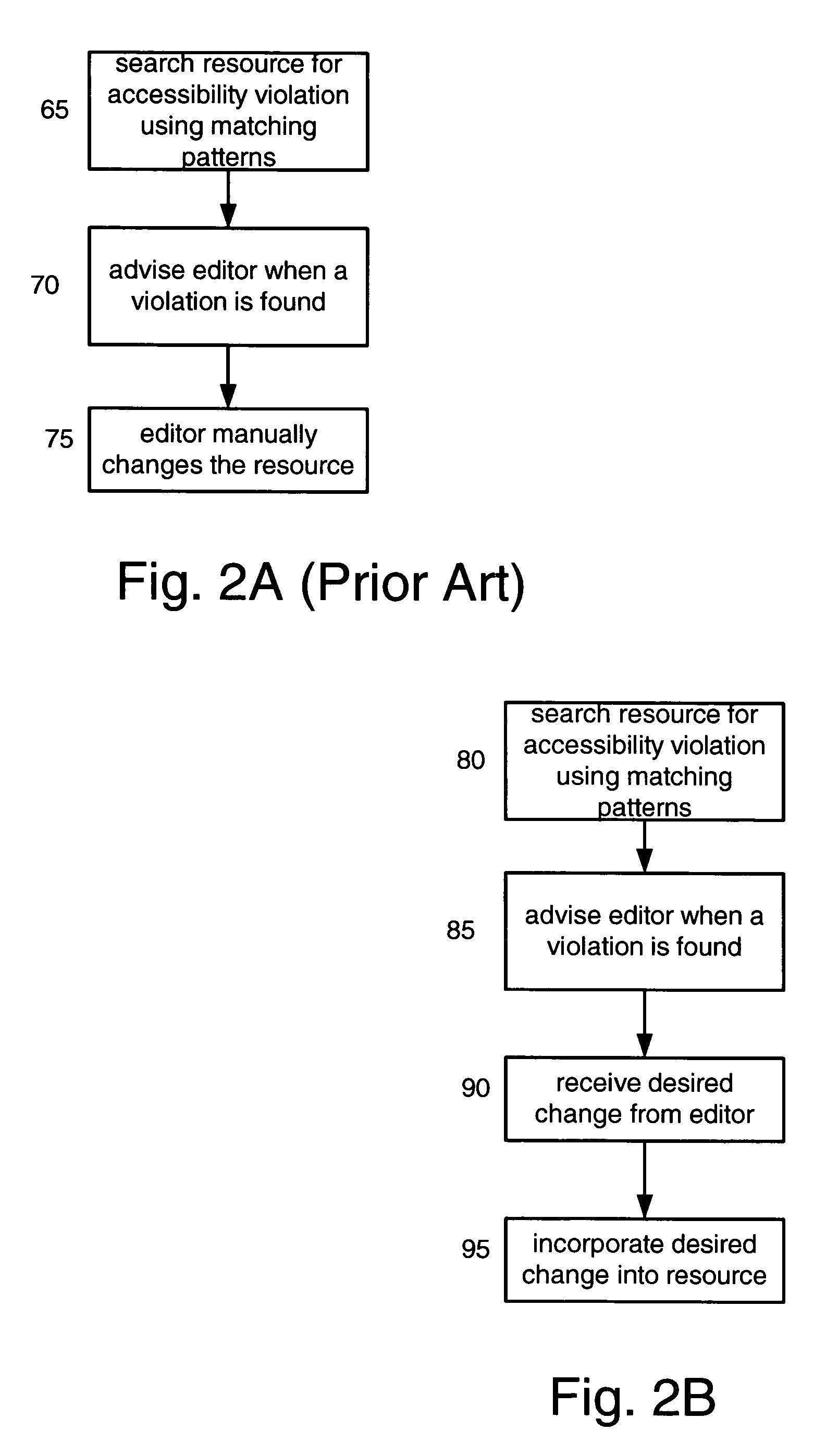System and method for enhancing resource accessibility
a resource and accessibility technology, applied in the field of rendering the content of resources, can solve the problems of not meeting the needs of a wide range of devices and users, unable to meet the needs of a large range of users, and many websites do not follow these guidelines, so as to achieve the effect of enhancing resource accessibility
- Summary
- Abstract
- Description
- Claims
- Application Information
AI Technical Summary
Problems solved by technology
Method used
Image
Examples
Embodiment Construction
[0047] Software for converting information from one format to another is well known. In the area of websites, a rendering engine converts a web page from its conventional form to a reformatted form based on user preferences.
[0048]FIG. 1A depicts the environment of a conventional rendering engine. A user has personal computer 10 or other access device, such as a personal digital assistant (PDA), coupled to Internet 20. Using typical hypertext transfer protocol (http), the user sends a page request via Internet 20 to server 30, and server 30 responds with a page to be presented on the user's access device. Third party server 50 is also coupled to Internet 20.
[0049] Page rendering engine 35, comprising software executing on server 30, receives the page request, retrieves the original hypertext markup language (HTML) web page, and converts its format according to user preferences, which are stored at one or more of the user's access device, shown as user preferences 15, the server's d...
PUM
 Login to View More
Login to View More Abstract
Description
Claims
Application Information
 Login to View More
Login to View More - R&D
- Intellectual Property
- Life Sciences
- Materials
- Tech Scout
- Unparalleled Data Quality
- Higher Quality Content
- 60% Fewer Hallucinations
Browse by: Latest US Patents, China's latest patents, Technical Efficacy Thesaurus, Application Domain, Technology Topic, Popular Technical Reports.
© 2025 PatSnap. All rights reserved.Legal|Privacy policy|Modern Slavery Act Transparency Statement|Sitemap|About US| Contact US: help@patsnap.com



